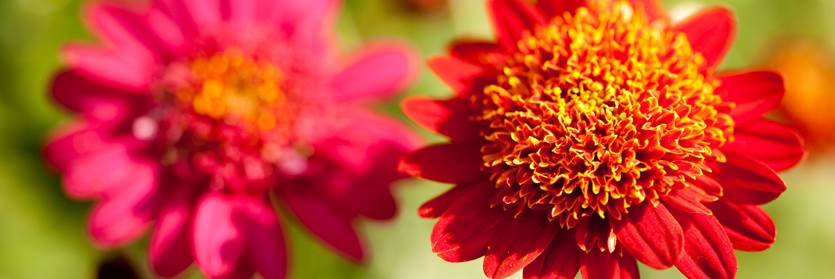Inside The New York Botanical Garden
Posted in From the Library on November 1 2018, by Esther Jackson
Esther Jackson is the Public Services Librarian at NYBG’s LuEsther T. Mertz Library where she manages Reference and Circulation services and oversees the Plant Information Office. She spends much of her time assisting researchers, providing instruction related to library resources, and collaborating with NYBG staff on various projects related to Garden initiatives and events.
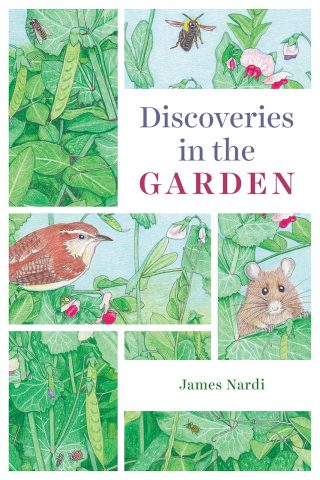 These three books from the Mertz Library help readers discover new details about the world around them. From gaining a new perspective on a garden plant to delving into the world of microorganisms, two authors help readers to experience the natural world in new and interesting ways.
These three books from the Mertz Library help readers discover new details about the world around them. From gaining a new perspective on a garden plant to delving into the world of microorganisms, two authors help readers to experience the natural world in new and interesting ways.
Discoveries in the Garden (2018) by James Nardi is a simple and accessible introduction to botany using a garden as the catalyst for topics related to plant structure and physiology. Nardi, a skilled natural illustrator, Research Scientist in the Department of Entomology at the University of Illinois at Urbana-Champaign, and author of the acclaimed Life in the Soil: A Guide for Naturalists and Gardeners (2007), writes in a clear manner that is appropriate for readers new to the topic of botany. Discoveries in the Garden is at times reminiscent of Brian Capon’s Botany for Gardeners, although it contains more figures and is a bit more simplified in sections. It offers a great compliment to Botany for Gardeners by way of its figures, making it appropriate for students as well as teachers who are doing lesson-planning related to introductory botany. In general, Discoveries in the Garden is a nice addition to the literature of books that are beginner-friendly and well-designed. It is appropriate for adult learners and well as more advanced young readers.
Read More
Posted in From the Library on October 26 2018, by Esther Jackson
Esther Jackson is the Public Services Librarian at NYBG’s LuEsther T. Mertz Library where she manages Reference and Circulation services and oversees the Plant Information Office. She spends much of her time assisting researchers, providing instruction related to library resources, and collaborating with NYBG staff on various projects related to Garden initiatives and events.
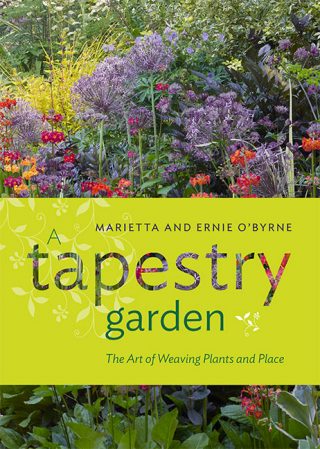 Three new books in the Mertz Library show readers the breadth of possibilities available to the home gardener, from place, to ponds, to planting.
Three new books in the Mertz Library show readers the breadth of possibilities available to the home gardener, from place, to ponds, to planting.
A Tapestry Garden: The Art of Weaving Plants and Place (2018) by Marietta and Ernie O’Byrne (co-owners of Northwest Garden Nursery in Eugene, Oregon) is a lovely collection of photographs and plant recommendations. Eye candy for those who are in search of new planting ideas, Tapestry Garden radiates with the authors’ love of plants as their personal stories which accompany the featured flora. The authors offer a palette of plants both native to the Pacific Northwest and from other regions of the world, with an emphasis on cultivated varieties. An eclectic, sometimes stream-of-consciousness narrative is a departure from more structured “how-to” gardening books, and invites readers to engage with the authors’ gardening philosophy and favorite plants.
Read More
Posted in What's Beautiful Now on October 24 2018, by Matt Newman
Here comes the color. Look to the trees for what’s beautiful now at NYBG—the leaves of the Forest and elsewhere in the Garden are making their move for fall at long last. In the Native Plant Garden, the Home Gardening Center, and Seasonal Walk, you’ll see the tried and true colors of the season coming through in flowers and foliage this week.
[Not a valid template]
Posted in From the Library on October 18 2018, by Esther Jackson
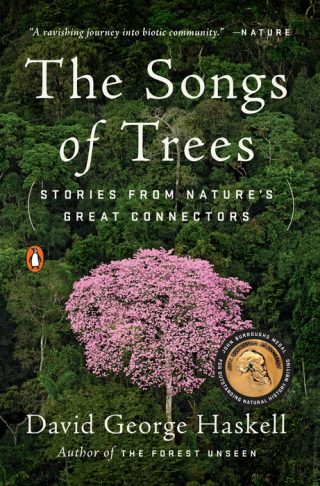 The Songs of Trees: Stories from Nature’s Great Connectors is the second book from David George Haskell, also the author of The Forest Unseen. In The Songs of Trees, Haskell explores the worlds of different trees in different corners of the world, ruminating on their existences and relationships to the organisms and environments around them.
The Songs of Trees: Stories from Nature’s Great Connectors is the second book from David George Haskell, also the author of The Forest Unseen. In The Songs of Trees, Haskell explores the worlds of different trees in different corners of the world, ruminating on their existences and relationships to the organisms and environments around them.
Although The Songs of Trees is in the genre of popular nature writing, it is challenging to find a description that is fitting for the whole book. The most appropriate summation I arrived at is that it would be a wonderful book to read out loud, or to hear someone read. Haskell loves words and literary devices as well as music, and his prose has been crafted for lyricism. The Songs of Trees is Aldo Leopold meets Henry David Thoreau with bigger words and more people in the nature scenes. In its best moments, it is reminiscent of John McGahern.
In The Songs of Trees, Haskell visits 12 trees around the world: ceibo, balsam fir, sabal palm, green ash, hazel, redwood, ponderosa pine, cottonwood, callery pear, olive, and Japanese white pine. For me, perhaps ironically, the most compelling passages were about animals, including an aside about rattlesnakes in Tennessee. However, different readers will connect with different chapters. As with certain other books of essays, The Songs of Trees is eclectic, and therefore difficult to read in a single sitting. Excerpted chapters are appropriate for book clubs, creative writing classes, or citizen scientists and naturalists.
Read The Songs of Trees for a book that plays with the English language, using trees and nature as its device.
Posted in Garden News on October 17 2018, by Plant Talk
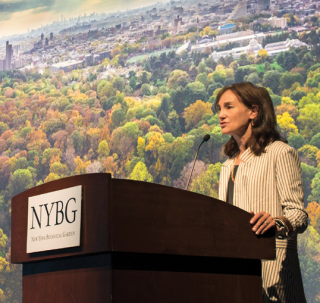 On July 1, 2018, Carrie Rebora Barratt, Ph.D., became the ninth CEO and President of The New York Botanical Garden and the first woman to hold the position. She came to the Garden following a distinguished career at The Metropolitan Museum of Art, where she worked as a curator and transitioned from research and scholarship to governance and administration, most recently serving since 2009 as Deputy Director, leading visitor-focused, mission-aligned initiatives for the institution during a transformational period in Museum’s history. At NYBG, Dr. Barratt brings her focus to the care and presentation of the living collections and special exhibitions. Her track record for enhancing visitor engagement matches the Garden’s reputation for groundbreaking scientific research and conservation programs; creative educational programs connecting art to science and human life to living collections, with enhanced offerings from pre-K through post-graduate studies; and vibrant exhibition and public programs that serve ever-growing and diverse audiences.
On July 1, 2018, Carrie Rebora Barratt, Ph.D., became the ninth CEO and President of The New York Botanical Garden and the first woman to hold the position. She came to the Garden following a distinguished career at The Metropolitan Museum of Art, where she worked as a curator and transitioned from research and scholarship to governance and administration, most recently serving since 2009 as Deputy Director, leading visitor-focused, mission-aligned initiatives for the institution during a transformational period in Museum’s history. At NYBG, Dr. Barratt brings her focus to the care and presentation of the living collections and special exhibitions. Her track record for enhancing visitor engagement matches the Garden’s reputation for groundbreaking scientific research and conservation programs; creative educational programs connecting art to science and human life to living collections, with enhanced offerings from pre-K through post-graduate studies; and vibrant exhibition and public programs that serve ever-growing and diverse audiences.
Read More
Posted in What's Beautiful Now on October 11 2018, by Matt Newman
Dahlias continue to shine in the Home Gardening Center, Perennial Garden, and elsewhere in our collections, showing off their sunny faces as the weather cools. The autumn color palette is vivid and dynamic, shifting week to week as we move deeper into the season!
[Not a valid template]
Posted in From the Library on October 11 2018, by Esther Jackson
Esther Jackson is the Public Services Librarian at NYBG’s LuEsther T. Mertz Library where she manages Reference and Circulation services and oversees the Plant Information Office. She spends much of her time assisting researchers, providing instruction related to library resources, and collaborating with NYBG staff on various projects related to Garden initiatives and events.
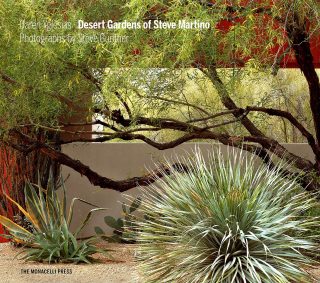 Three new books in the LuEsther T. Mertz Library will inspire readers to embrace desert landscapes and plants.
Three new books in the LuEsther T. Mertz Library will inspire readers to embrace desert landscapes and plants.
Desert Gardens of Steve Martino (2018) is a lavish ode to the landscapes of the landscape designer Steve Martino. Authored by Caren Yglesias, a licensed architect and lecturer in landscape architecture and environmental planning at UC Berkeley, with photographs by Steve Gunther, the book is well-designed and executed. Because of their artistic nature, some of the photo-documentation abstracts the designs of the gardens; it is helpful that each garden includes a site plan that illustrates the layout of the site in more measured detail. Twenty-one of Martino’s gardens in the American southwest are treated. Martino, who focuses on using plants that are native to the Sonoran region, creates gardens that are evocative of the desert from which they spring. East coast gardeners and designers may not look to Martino for practical landscape design inspiration, owing to the differences in climates. However, his use of structure and color can be universally enjoyed by those who create, maintain, and appreciate garden landscapes.
Read More
Posted in From the Library on October 4 2018, by Esther Jackson
Esther Jackson is the Public Services Librarian at NYBG’s LuEsther T. Mertz Library where she manages Reference and Circulation services and oversees the Plant Information Office. She spends much of her time assisting researchers, providing instruction related to library resources, and collaborating with NYBG staff on various projects related to Garden initiatives and events.
[Not a valid template]
Gardenlust: A Botanical Tour of the World’s Best New Gardens by Christopher Woods for Timber Press is a seductive new title introducing readers to 50 new and exciting modern gardens throughout the world. Woods, former director and chief designer at Chanticleer, with an impressive horticultural resume, offers readers profiles of 50 gardens that have opened in the last 18 years. Although Woods cautions that his choices are personal, the contemporary gardens and landscapes featured are unequivocally appealing although their designs are quite diverse.
Two of the noteworthy gardens featured are Vallarta Gardens in Mexico and the Naples Botanical Garden in Florida, pictured here. My personal favorite, possibly because it is so striking, is The Orpheus Project at Boughton House. Certainly, different readers will have affinity for different gardens. Regardless of which gardens inspire the most awe in any individual reader, most if not all will feel the tug of wanderlust and the gardenlust to explore many of these new and beautiful landscapes.
Posted in What's Beautiful Now on October 3 2018, by Matt Newman
The changing leaves may only just be starting, but the fall encore of color in the Peggy Rockefeller Rose Garden is already well on its way. We expect to see a bit of a fireworks show from the collection this weekend in particular, and with the Spooky Pumpkin Garden, our Honey & Harvest Weekend, and Georgia O’Keeffe: Visions of Hawai‘i taking place at the same time, it’ll be the perfect time to stop into NYBG.
[Not a valid template]
Posted in Around the Garden on October 2 2018, by Katherine Wagner-Reiss
Katherine Wagner-Reiss has her certificate in botany from NYBG and has been a tour guide there for three years.
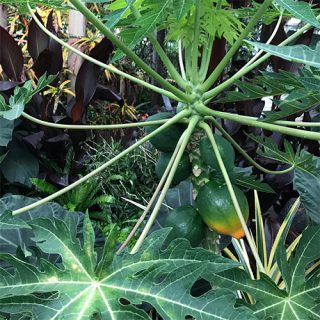 Georgia O’Keeffe: Visions of Hawai‘i features a painting titled Papaya Tree, ‘IAO Valley, Maui. Historically, this is a particularly interesting painting because O’Keeffe submitted it to The Hawaiian Pineapple Company (later Dole) for use in their advertisements, but it was rejected because a major competitor of theirs sold papayas! It is the only painting of a tree form in the exhibition, but botanically speaking, papayas are not trees because they lack a woody trunk; they are large herbaceous perennials. Nearly all of the plant species in O’Keeffe’s Hawaiian paintings can be found growing in the Haupt Conservatory. You will find the live papaya by the hale, a typical Hawaiian structure used for social gatherings.
Georgia O’Keeffe: Visions of Hawai‘i features a painting titled Papaya Tree, ‘IAO Valley, Maui. Historically, this is a particularly interesting painting because O’Keeffe submitted it to The Hawaiian Pineapple Company (later Dole) for use in their advertisements, but it was rejected because a major competitor of theirs sold papayas! It is the only painting of a tree form in the exhibition, but botanically speaking, papayas are not trees because they lack a woody trunk; they are large herbaceous perennials. Nearly all of the plant species in O’Keeffe’s Hawaiian paintings can be found growing in the Haupt Conservatory. You will find the live papaya by the hale, a typical Hawaiian structure used for social gatherings.
Another interesting aspect of the Conservatory display is that the plants are divided into those native to Hawai‘i, those brought to Hawai‘i by the Polynesians about 1500 years ago (known as canoe plants), and those introduced after Captain Cook’s landing in 1778 (post-contact plants). Carica papaya is a post-contact plant, native to Central and South America, and introduced to Hawai‘i soon after Captain Cook’s landing, as a dioecious plant with male and female specimens. In 1911 a gynodioecious solo papaya, better for commercial use, was introduced from the Caribbean. Papayas are now naturalized in Hawai‘i.
O’Keeffe initially labeled this painting as a papaw. Of course, common names can be confusing because, while some people call papaya “pawpaw,” most people are thinking of the fruit of Asimina triloba—a large shrub also known as the pawpaw.
Carica is derived from the Greek for a kind of fig, because of the fig-like leaves. The specific epithet “papaya” was possibly derived from the Caribbean word for this fruit. The family is Caricaceae.
If you want to see a papaya after the Georgia O’Keeffe show departs on October 28, Carica papaya ‘Thai Red’ can be found growing in the lowland rain forest house of the Enid A. Haupt Conservatory.
 These three books from the Mertz Library help readers discover new details about the world around them. From gaining a new perspective on a garden plant to delving into the world of microorganisms, two authors help readers to experience the natural world in new and interesting ways.
These three books from the Mertz Library help readers discover new details about the world around them. From gaining a new perspective on a garden plant to delving into the world of microorganisms, two authors help readers to experience the natural world in new and interesting ways.